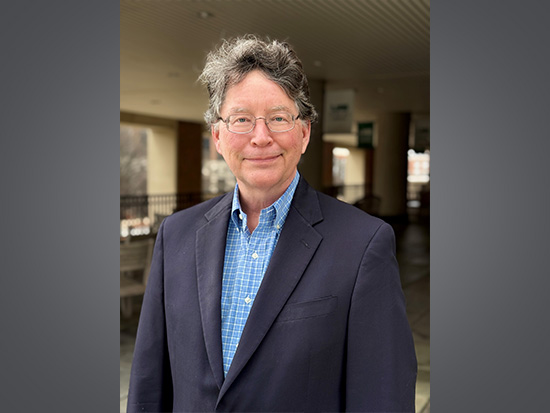 Timothy Gawne, Ph.D.Timothy Gawne, Ph.D., University of Alabama at Birmingham School of Optometry professor, has been awarded an R01 grant to investigate the growing epidemic of myopia. Also known as nearsightedness, myopia affects over 40 percent of the adult population in the United States and approximately one billion people worldwide. This significant public health issue is linked to abnormal elongation of the eyeball, which raises the risk of developing blinding conditions.
Timothy Gawne, Ph.D.Timothy Gawne, Ph.D., University of Alabama at Birmingham School of Optometry professor, has been awarded an R01 grant to investigate the growing epidemic of myopia. Also known as nearsightedness, myopia affects over 40 percent of the adult population in the United States and approximately one billion people worldwide. This significant public health issue is linked to abnormal elongation of the eyeball, which raises the risk of developing blinding conditions.
“Myopia is not just a matter of needing glasses or contact lenses,” Gawne said. “The increased axial length of the eye remains a major risk factor for vision-threatening diseases. Our goal is to understand the environmental factors contributing to this epidemic and develop effective prevention strategies.”
Gawne’s research will focus on three specific aims. The first aim is to determine the anti-myopia effectiveness of various real-world visual scenes.
“We know that what you are looking at can affect eye growth, but there’s little information on how complex, real-world scenes impact the development of myopia,” Gawne said. “Our novel experimental methods will help us predict the effectiveness of different visual environments. For example, does it matter if you are looking at an office interior, or a forest outdoors?”
The second aim involves developing an improved Repeated Low-level Red-Light therapy. Recent studies have shown that RLRL can slow the progression of myopia in children and even shorten the axial length of the eye. However, current therapies involve staring at a high-intensity light that may pose safety risks.
“We need to find a balance,” Gawne said. “Our goal is to create a therapy that is both effective and safe, using moderate-intensity ambient red light.”
The third aim is to develop objective recommendations for lighting spectra.
“Artificial light sources vary widely in their spectra, and some of them could be a significant risk factor for myopia,” Gawne said. “By understanding these effects, we can provide guidelines that may have a substantial public health impact.”
Gawne’s research and findings could translate to human applications, potentially revolutionizing myopia prevention and treatment.
His dedication to this research is driven by the urgent need for more effective treatments to tackle the growing global epidemic of myopia. Findings from his groundbreaking study have the potential to significantly advance the ongoing efforts toward developing effective strategies to prevent and treat myopia.
“Our ultimate aim is to improve public health and prevent vision loss,” Gawne said. “This grant will enable us to take crucial steps toward achieving that goal.”
Safal Khanal, O.D., Ph.D., assistant professor, is the co-investigator for this four-year, $1.9 million National Eye Institute grant.